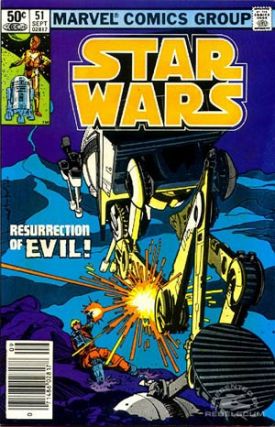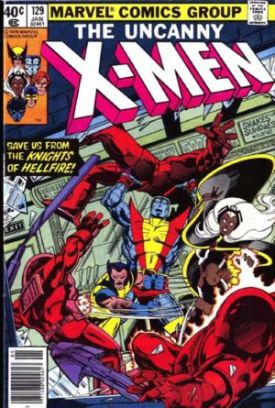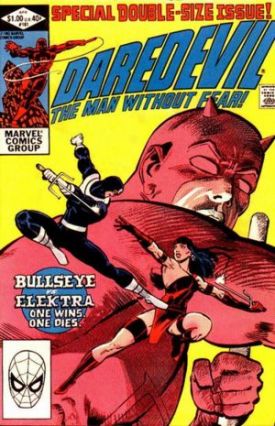Comics /
Spotlight /
Knowledge and Scholarship
Marvel History Part 4 - Mix Media
By Frederic Haddox
July 30, 2008 - 19:34
Two years later, Stan Lee
made a bold move to market a comic book for the British market.
Captain Britain was sold exclusively to the British market and
“later in America.” [1]
Spider-Man was gaining further
popularity.
He
had a regular instalment on the Children’s Television Workshop
production of
The Electric Company. The public television
program was educational and
Spider-Man was given three to five
minutes per episode to solve crime and teach a lesson.
Spider-Man
also received his second title,
The
Spectacular Spider-Man
in 1976. [1] In the same year, Spider-Man team-up with Superman in a
comic.
Superman vs. Spider-Man was the first joint effort by
Marvel Comics and DC Comics. [.2] Its success let to two other
co-production team-ups in the 1980’s.
A
Spider-Man
television serial was on the air in Japan. Although much of the
content differed from the comic books, it still added to
Spider-Man’s
worldwide popularity. [8] CBS television studios introduced a live
action show starring The Incredible Hulk. The show, starring Bill
Bixby with Lou Ferrigno as
The Hulk, further boosted Marvel
Comics’ popularity.
In
1977, George Lucas produced
Star Wars. Even though its
unparalleled success in popular culture was a surprise to most in the
industry, Marvel Comics made a rather fortunate gamble. Three months
prior to the film’s release, Marvel Comics published a six-issue
comic rendition of the film.
Star Wars #1 became the first
million copy seller since the Golden Age. [2]
Star Wars was
made into a regular series. Further success followed as the Kenner
Toy Company manufactured toys based on the film. The films, toys and
comic books worked together to fortify the unit sales of
Star Wars
products. Marvel Comics also tried to take advantage of other popular
toy lines by releasing
The Shogun Warriors and
The
Micronauts.
The success of Marvel
Comics in the late seventies stabilized its position in the overall
market. Since the company wasn’t forced to make changes due to
slumping sales, Marvel Comics kept their same course. Jim Shooter,
Marvel Comics’ new Editor-in-Chief, worked to standardize it’s
procedures within the company as well as set standards for creator
royalties.
A
subsidiary comic line known as Epic Comics started in 1980. [1] The
mostly creator-owned stories featured more mature themes. John Byrne
and Chris Claremont’s work on
The X-men, which started in
1979, was gaining popularity. Byrne, a Canadian artist, introduced a
group of Canadian mutants known as Alpha Flight in
X-Men #120.
Ten issues later, would begin one of the most revered series ever
produced.
X-Men #129 to
#137,
The Saga of Phoenix,
resulted in the death of Jean Grey, one of the original five X-Men.
Despite the numerous letters of complaint about this outcome, Marvel
Comics’s popularity had never been higher.
Of equal importance,
was Frank Miller’s work with
Daredevil. Miller’s
groundbreaking work, which began in 1979, involved giving Daredevil a
darker persona, a love interest and personal turmoil which resulted
from her death. [2]
References
1.
^Wikepedia, the free encylopedia: “Marvel Comics”
2. ^ www.chezcomics.com :
“Marvel Comics History”
Last Updated: January 17, 2025 - 08:20


